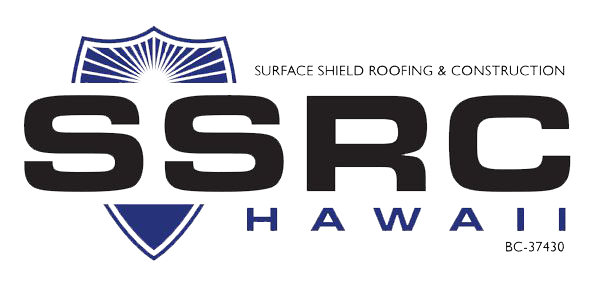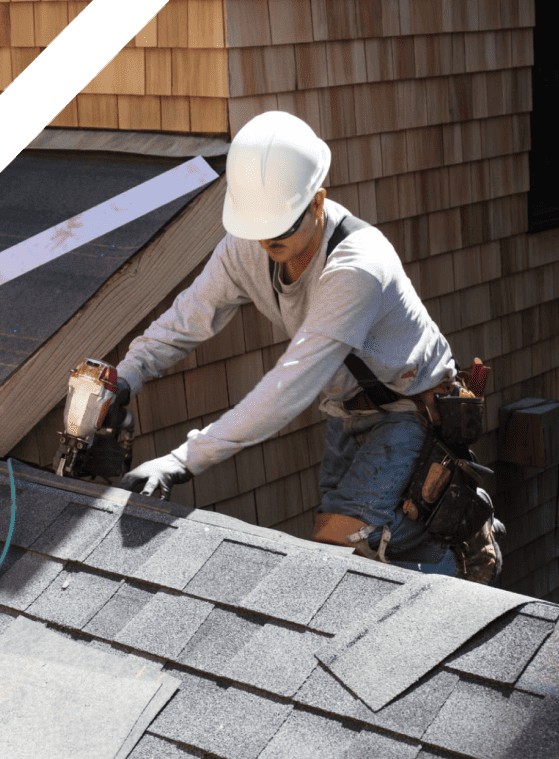Uncover Common Roof Covering Problems and Exactly How to Address Them Successfully
When it concerns your roofing system, spotting troubles early can save you money and time. You could observe water discolorations on your ceiling or split shingles during your routine checks. Ignoring these signs can lead to larger problems down the line. Comprehending just how to recognize and attend to these usual roof problems is vital for maintaining your home's honesty. What details actions should you take to guarantee your roofing remains in leading condition?
Recognizing Roof Leakages and Their Causes

Following, analyze your roofing system from the outside. Try to find missing or cracked floor tiles, rusted flashing, or harmed seamless gutters. Focus on areas around smokeshafts, vents, and skylights, as these prevail leakage resources. If you identify any one of these problems, it's vital to resolve them promptly.
During heavy rain, observe your roofing system for any pooling water or drips. This can expose leakages that may not show up throughout completely dry problems. By remaining watchful and on a regular basis inspecting your roofing system, you can catch leakages early and secure your home from further damages.
Handling Missing or Harmed Shingles
When you see missing or damaged tiles, it's vital to act swiftly to avoid more issues. You'll intend to identify the extent of the damages, fix any type of missing out on roof shingles, and take into consideration preventative upkeep suggestions to maintain your roof covering in leading form. Taking these steps can save you money and time later on.
Determining Roof Shingles Damages
Although roof shingles are made to endure the elements, they can still suffer damages gradually, leading to possible leakages and costly repair services. To determine tile damages, start by examining your roofing for missing out on, fractured, or curled tiles. Try to find indications of discoloration or granule loss, which can indicate deterioration. Take note of any type of locations where shingles are lifting or twisting, as these can develop susceptabilities. It's additionally a good idea to inspect for water spots or mold and mildew on your ceilings and walls, as these could signify leaks originating from harmed shingles. Frequently monitoring your roofing, especially after severe weather, can aid you capture concerns early and preserve the stability of your home.
Fixing Missing Out On Tiles
After identifying shingle damage, the next step is attending to any missing or harmed tiles immediately to avoid further concerns. Beginning by examining the affected area and figuring out the number of tiles need substitute. If you can, climb up onto your roofing safely, using suitable gear. Eliminate any kind of broken tiles very carefully utilizing a lever. As soon as you've removed the area, slide in the brand-new roof shingles, ensuring they straighten with the existing ones. Safeguard them with roof nails and apply roofing adhesive for included security. Do not forget to secure the sides to prevent water seepage. If you're uncomfortable with the repair service, it's wise to call a professional. Taking activity quickly will aid keep your roofing's honesty and expand its life expectancy.
Preventive Maintenance Tips
Exactly how can you maintain your roof covering in top shape and avoid shingles from going missing out on or getting harmed? Regular examinations are key. Inspect your roofing at the very least two times a year and after severe weather condition. Seek signs of wear, such as curling, fracturing, or loose tiles.
Keep gutters tidy and devoid of particles to assure appropriate water flow and protect against tile damages. Trim overhanging branches to reduce the danger of them scuffing versus your roof covering during tornados.
Think about applying a protective sealer to prolong your tiles' life-span. Lastly, if you discover any type of concerns, address them promptly to avoid expensive repairs later on. Taking these safety nets can save you money and time while ensuring your roof covering continues to be sturdy and reliable.
Recognizing Roofing Ventilation Issues
Appropriate roofing air flow is necessary for keeping the long life and efficiency of your roof covering system, as it assists control temperature level and wetness levels in your attic room. Without sufficient ventilation, you could encounter issues like excessive warmth build-up, causing premature shingle damage, or increased moisture that can trigger mold growth and wood rot.
To assess your roofing air flow, check for indicators of getting too hot, such as distorted tiles or a warm attic room. Try to find blocked vents, which can restrict air flow and trap warm. You should assure your consumption and exhaust vents are balanced, allowing for Click Here appropriate air exchange.
If you suspect air flow issues, consider mounting additional vents or updating existing ones. Ridge vents, soffit vents, and gable vents can all improve air movement. Attending to these concerns promptly can secure your roofing system and save you from costly repairs down the line. Keep positive in keeping your roofing's air flow to shield your home.
Addressing Roofing System Moss and Algae Growth
While you may value the natural appearance of moss and algae on your roof covering, these microorganisms can lead to substantial problems if left unattended. Utilize a soft-bristle brush to gently scrub away the moss and algae, being careful not to damage your roof shingles.
Next, think about applying a specialized roofing cleaner or a blend of water and bleach to kill staying spores. Wash completely to avoid any type of chemical damage. Additionally, set up zinc or copper strips along the ridge of your roof. As rainfall cleans over these steels, it develops a safety barrier against future growth. Regular assessments and upkeep will help protect against moss and algae from returning, ensuring your roofing stays healthy for many years ahead.
Fixing Storm Damage and Wind Concerns
After a storm, it's important to analyze your roofing system for damages brought on by high winds and hefty rain. Beginning by checking for missing out on or broken tiles, as these prevail casualties. If you notice any type of, it's crucial to replace them without delay to avoid leakages. Next, inspect the flashing around smokeshafts and vents; harmed blinking can cause water infiltration.
Search for any kind of sagging locations, which may indicate water build-up or architectural problems. If you find any kind of particles, like branches or leaves, remove them very carefully to stay clear of more damage. If your gutters are obstructed, clear them to ensure appropriate drain.

For little repair services, you could manage it on your own, however don't think twice to call an expert for substantial damage. Remember, acting quickly can save you from bigger troubles down the line, so take that assessment seriously and deal with any issues immediately.
Acknowledging Indicators of Structural Damages
Just how can you tell if your roofing is experiencing architectural damage? Begin by searching for noticeable sagging or dips in your roofline. These signs indicate that the underlying structure might be jeopardized. Next, check for cracks or spaces in the walls or ceiling, as these can signal moving or working out due to roof covering problems. Take note of leakages or water stains, particularly in locations where the roof satisfies wall surfaces. If you notice missing or broken tiles, it's necessary to resolve them quickly, as they can reveal your roof to read this post here additional damages. Additionally, check your attic for any type of indicators of daytime peeking through, which could indicate your roof covering's honesty is at danger. Pay attention for unusual creaking or standing out audios, as they may indicate structural anxiety. If you observe any one of these signs, it's time to seek advice from a roof expert for a comprehensive analysis.
Routine Upkeep Tips for Longevity

Normal Evaluations Importance
Given that a roof covering is your home's very first line of defense against the components, regular evaluations are necessary for maintaining its integrity. You ought to inspect your roofing at the very least twice a year, ideally in spring and loss, to catch potential issues early. Maintaining up with these inspections can prevent costly repair services down the line and lengthen your roofing's lifespan, ensuring your home go to this site remains safe and audio for years to come.
Correct Seamless Gutter Upkeep
Normal roofing system assessments naturally lead to the value of correct rain gutter maintenance. Tidy your seamless gutters a minimum of twice a year to protect against blockages from fallen leaves, dust, and debris. If you stay in a tree-heavy area, consider examining them regularly. Make use of a durable ladder and put on gloves while eliminating the accumulation. Also, evaluate your seamless gutters for leakages or rust; they can cause water damages to your roof and home. Make certain downspouts direct water far from your foundation to avoid flooding. Mounting rain gutter guards can lessen debris accumulation and decrease upkeep time. Check for appropriate incline; rain gutters ought to incline towards the downspouts to assure perfect drainage. By following these suggestions, you'll prolong your seamless gutters' life expectancy and safeguard your roofing system.
Frequently Asked Concerns
Just How Can I Choose the Right Roof Covering Material for My Home?
To select the right roof covering material for your home, consider environment, durability, and aesthetics. Research study options like asphalt shingles, metal, or tile. Consider upkeep needs and budget to discover what matches you best.
What Are the Indicators I Required a Roof Substitute Instead of Repair Work?
If you observe extensive leakages, drooping, or missing shingles, you could need a roofing system substitute. If your roofing system's nearing its life expectancy or has significant damage, it's time to ponder a complete substitute rather of just fixings.
Exactly how Commonly Should I Schedule Professional Roofing System Examinations?
You must set up expert roofing evaluations at the very least annually, ideally in spring or loss. This helps capture prospective concerns early, ensuring your roofing system continues to be in good condition and prolonging its life-span.
Can I Set Up a New Roof Covering Over My Old One?
You can install a brand-new roof covering over your old one, but it's necessary to inspect neighborhood building ordinance and ensure the existing roof's problem is audio. This technique can conserve time and cash, yet consider prospective issues.
What Is the Average Life-span of Different Roof Materials?
The standard lifespan differs by product: asphalt shingles last 15-30 years, steel roof coverings can last 40-70 years, while tile or slate roofings might go beyond 50 years. Pick sensibly based upon your environment and budget plan.
Final thought
By staying watchful and attending to common roof covering issues without delay, you can safeguard your home and extend your roofing system's life-span. Routinely evaluate for leakages, harmed roof shingles, and ventilation problems, and deal with moss or algae development before it gets worse - roofing contractors oahu. After storms, look for any damages and make necessary fixings. With a little regular upkeep, you'll not just protect your financial investment but also enjoy comfort knowing your roof is in top shape. Don't wait-- act currently!